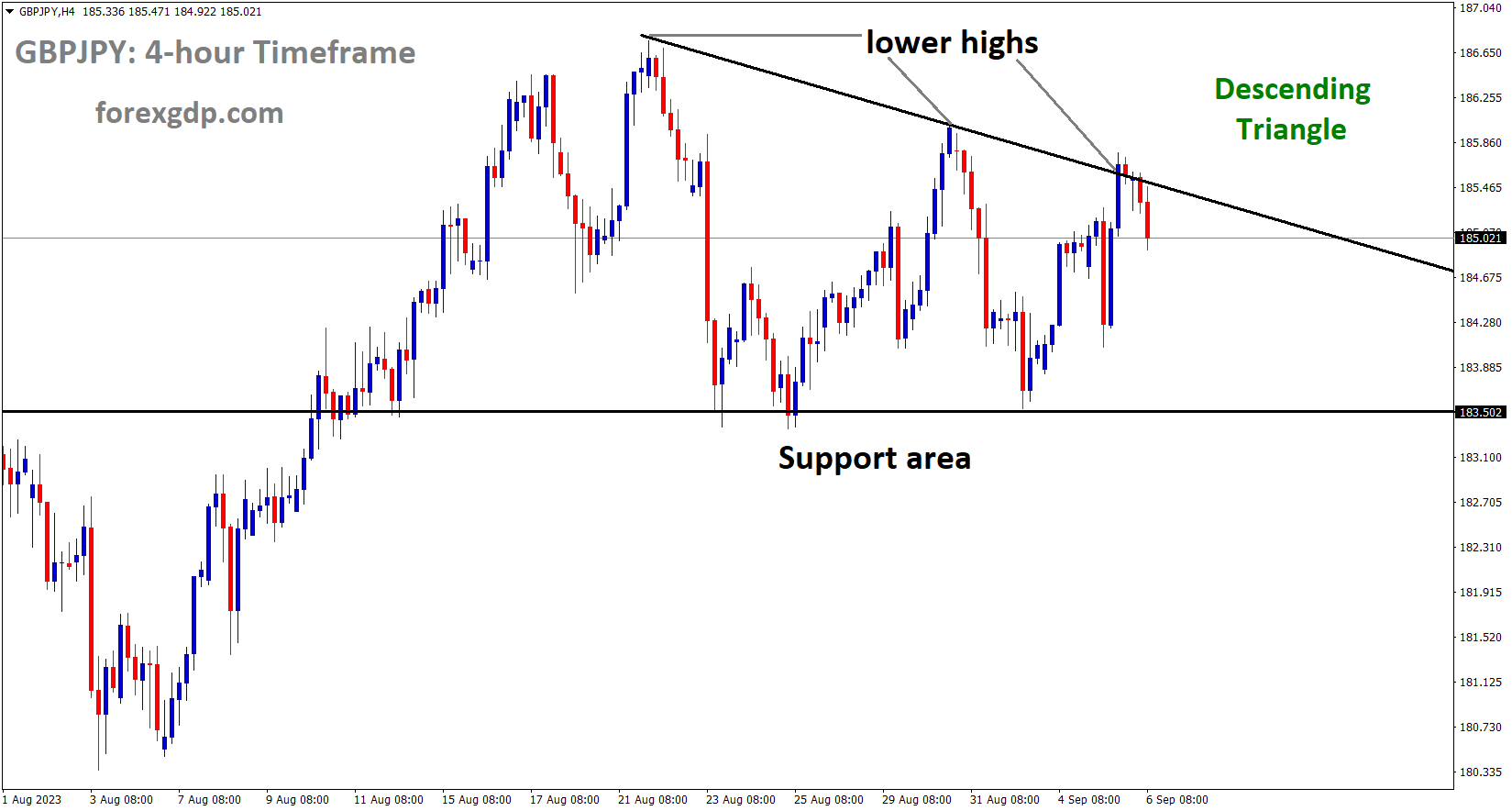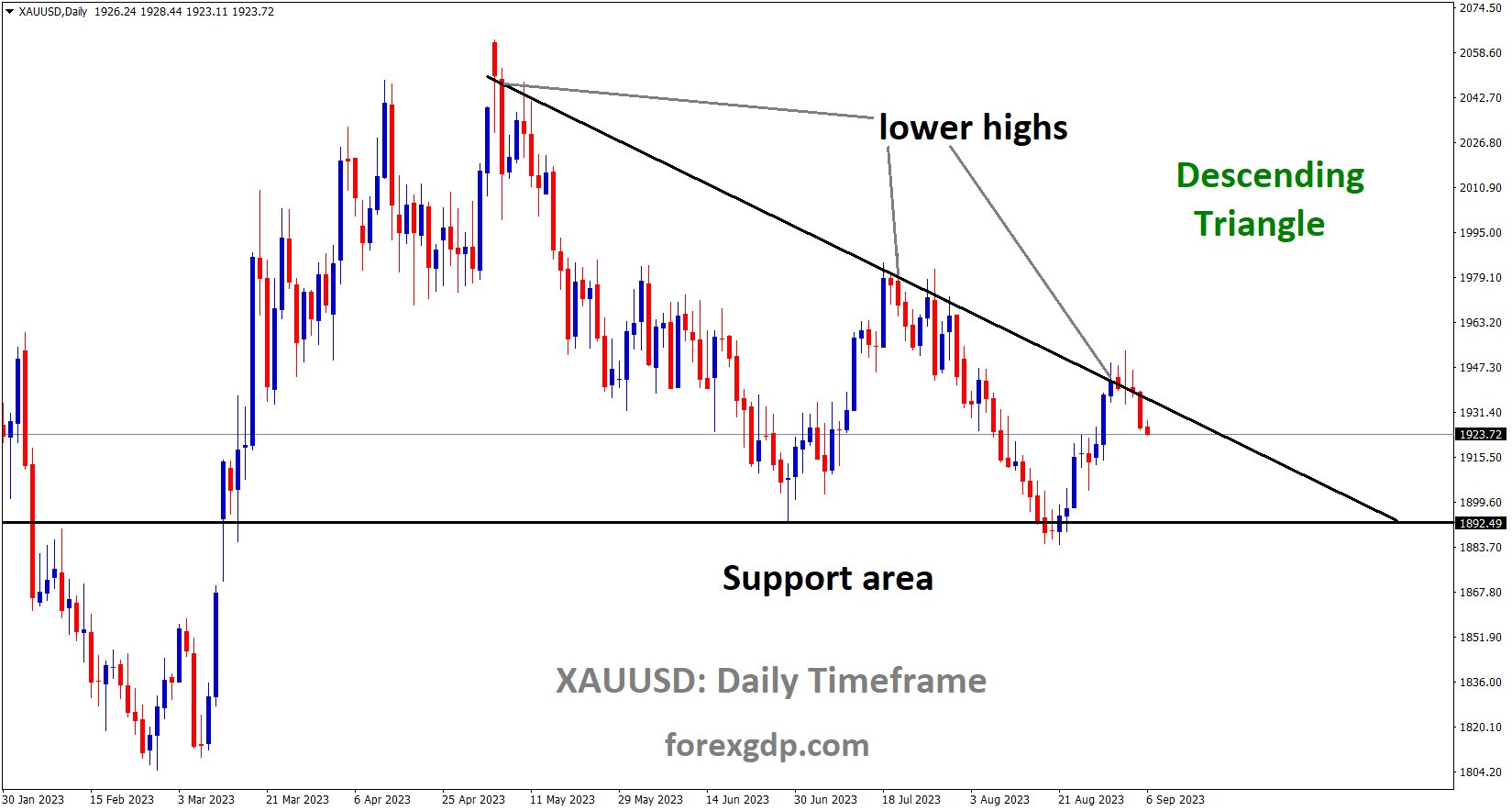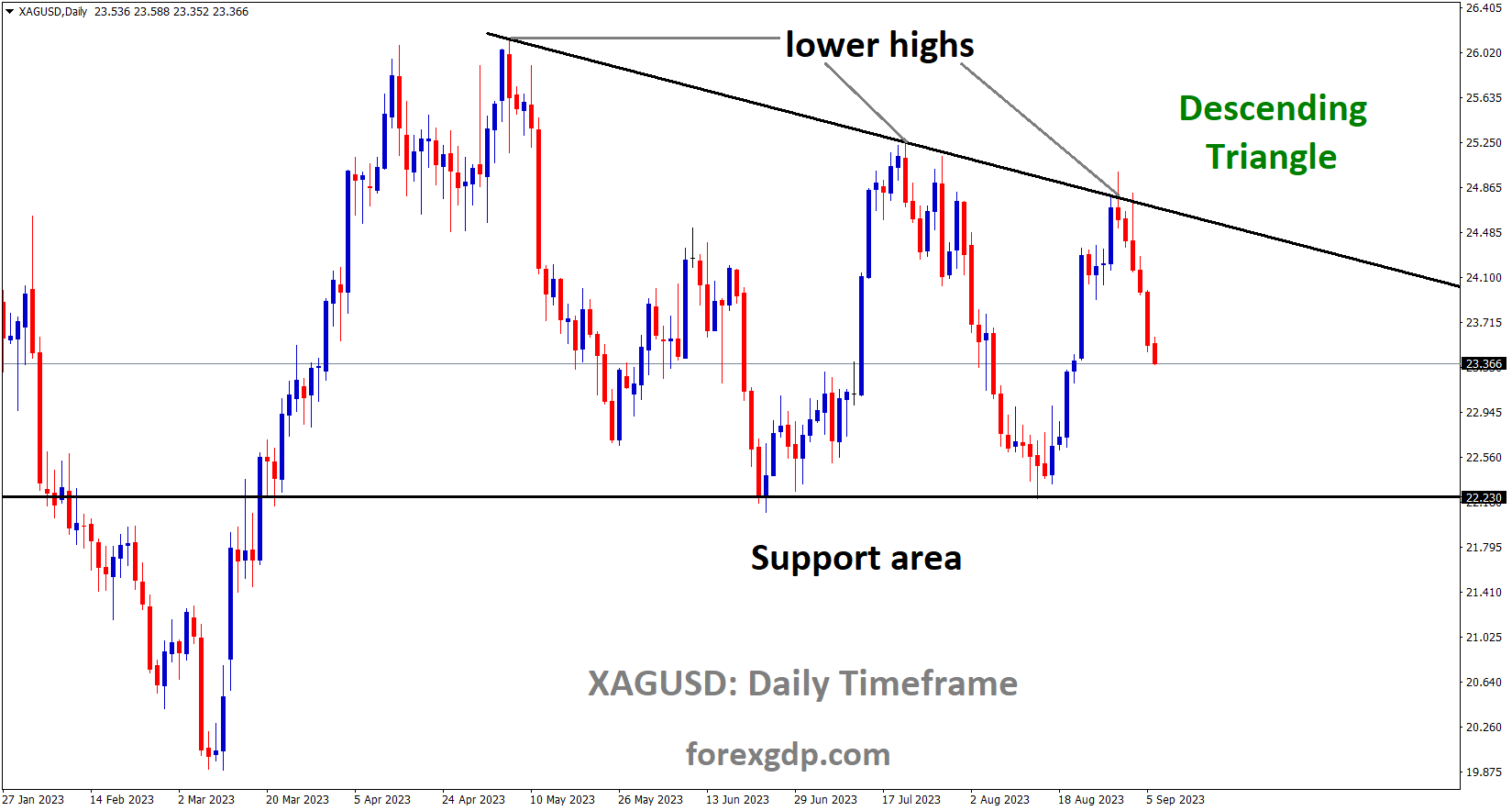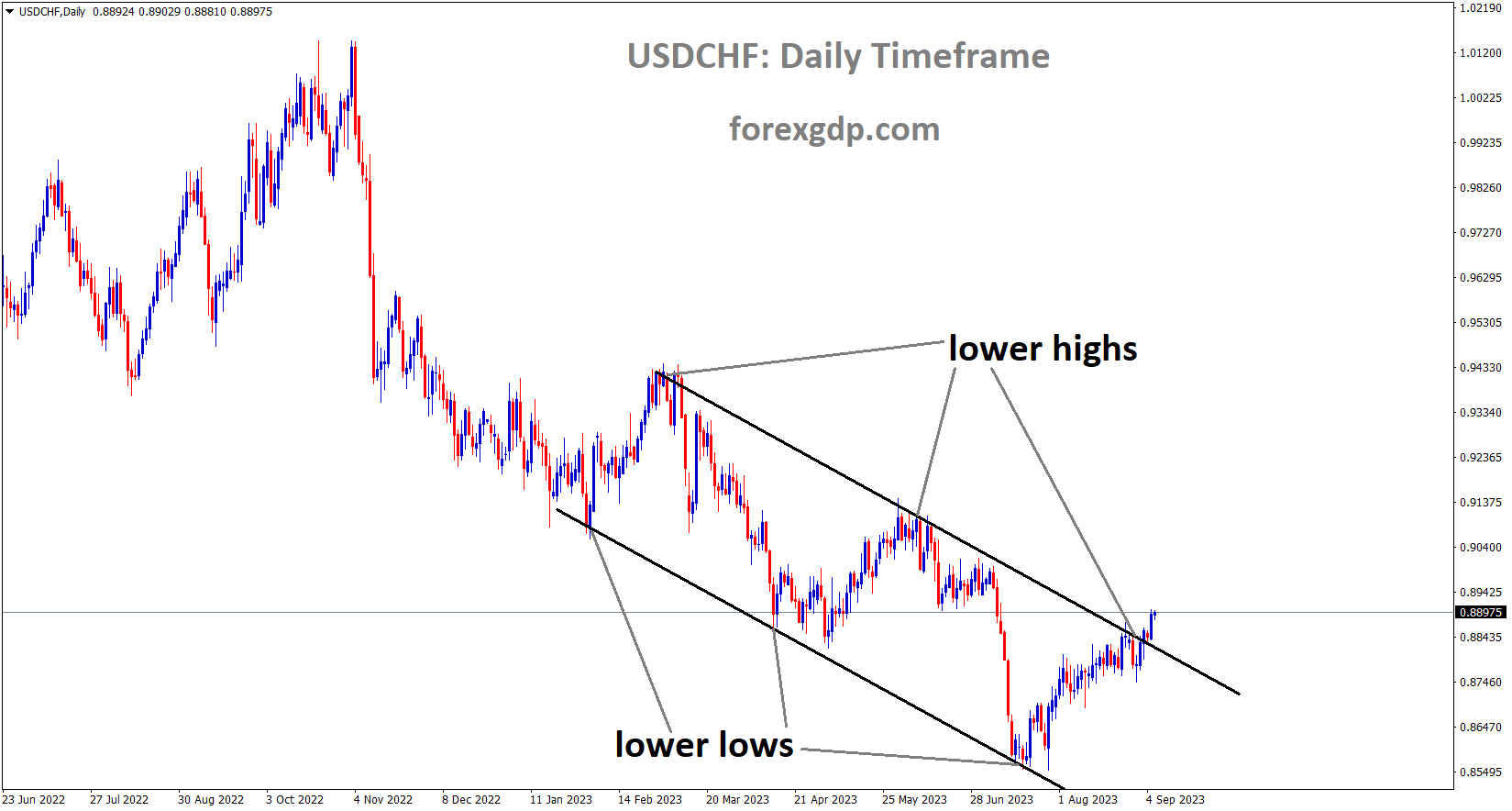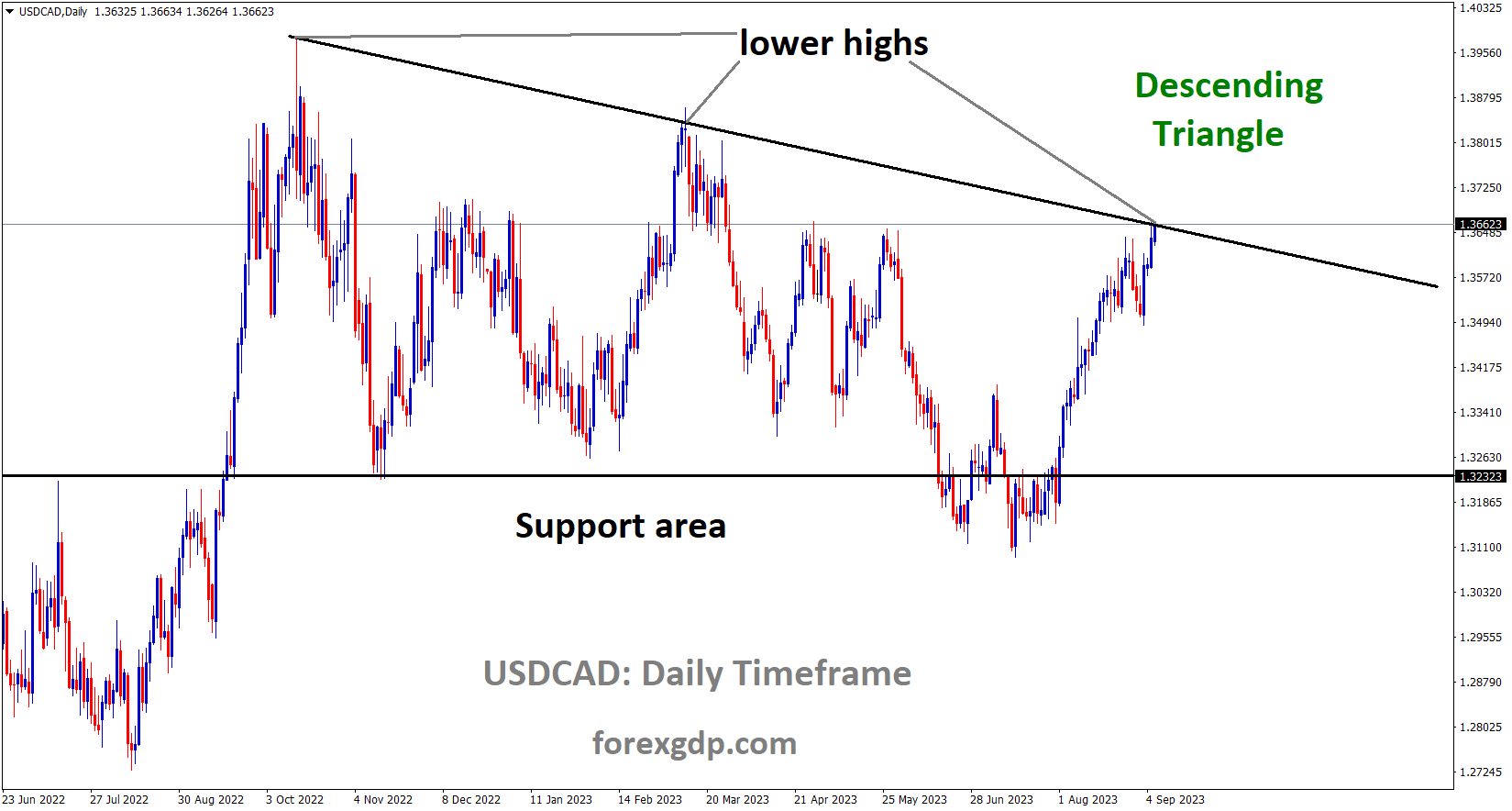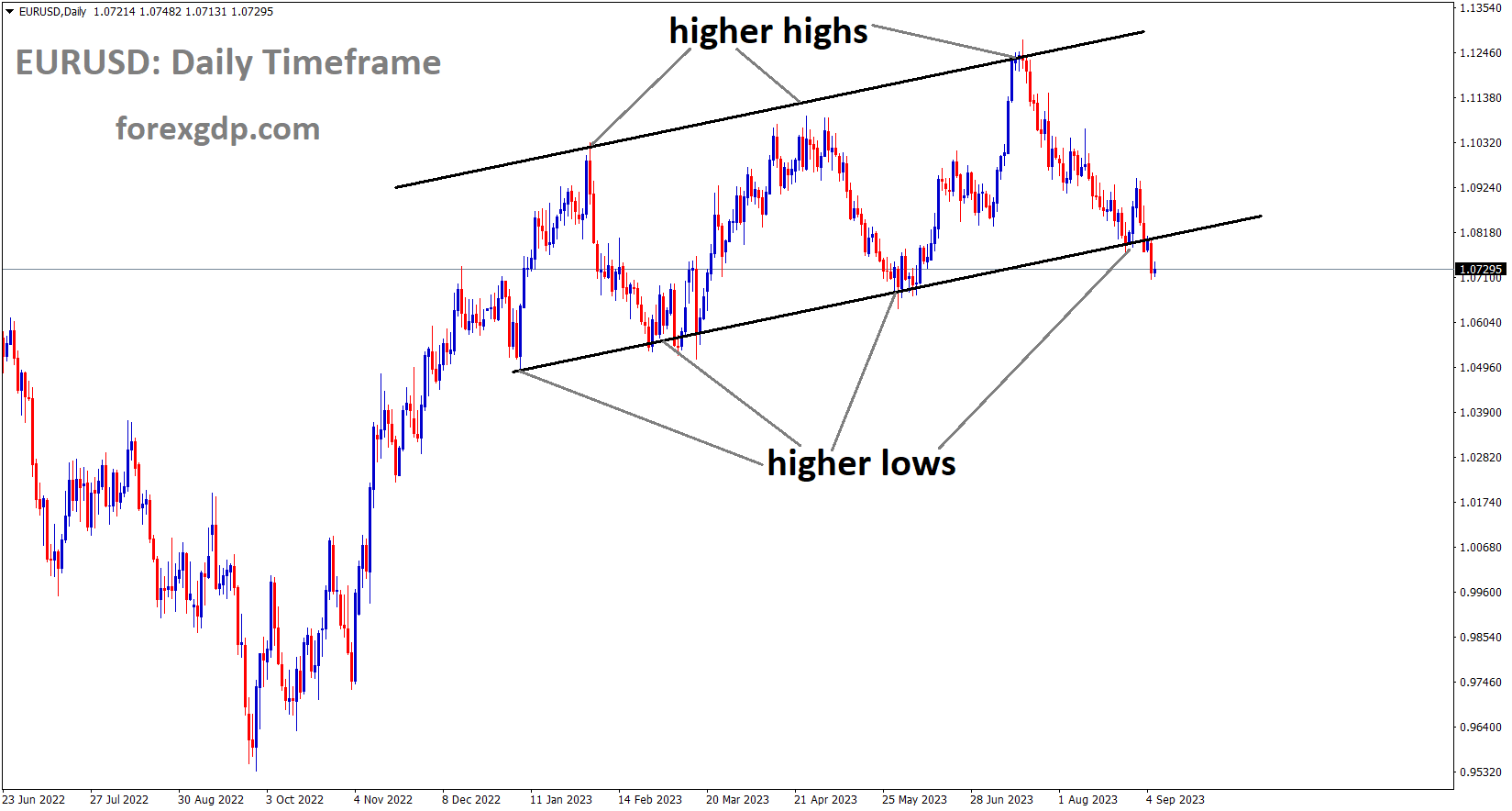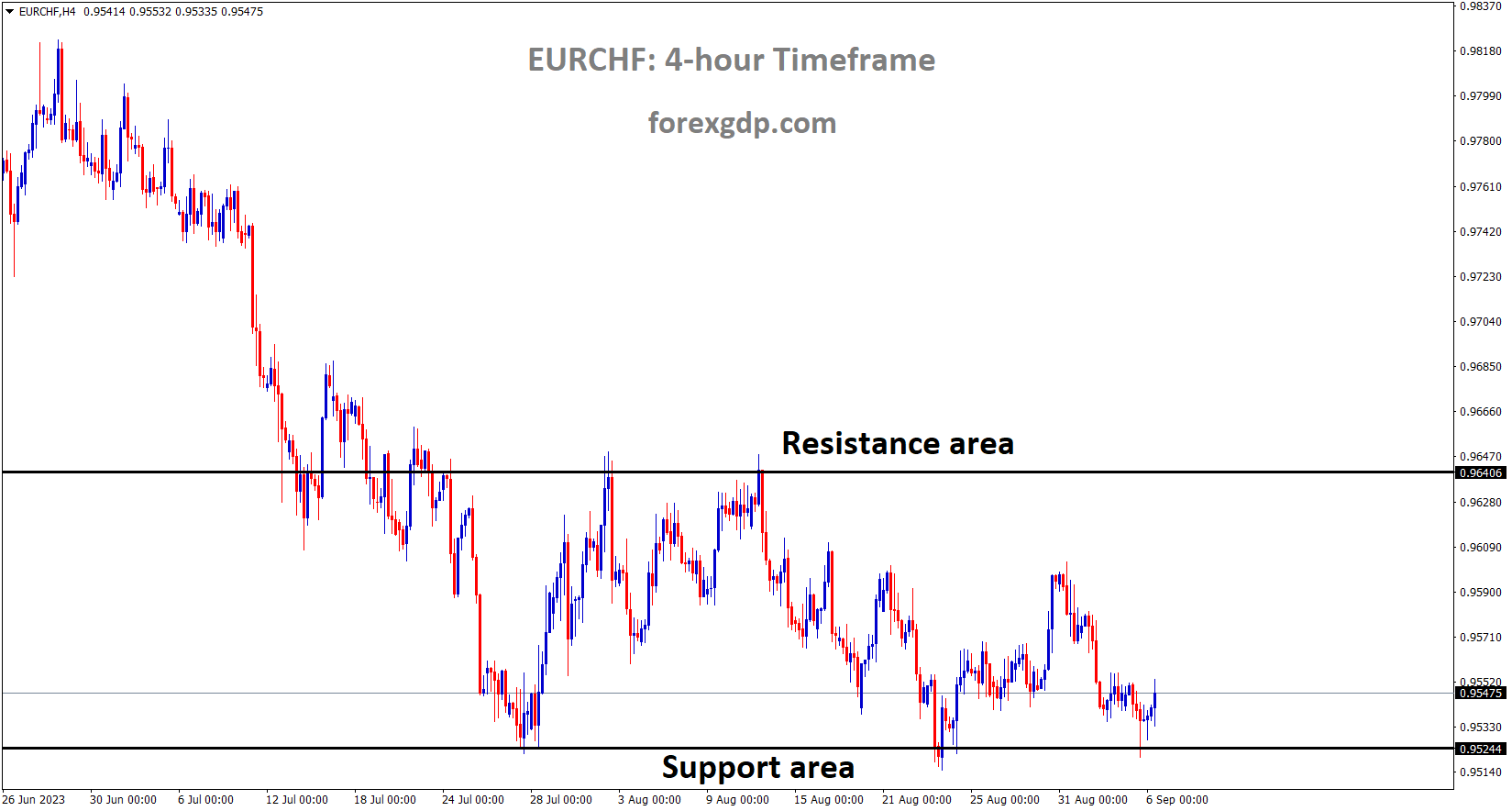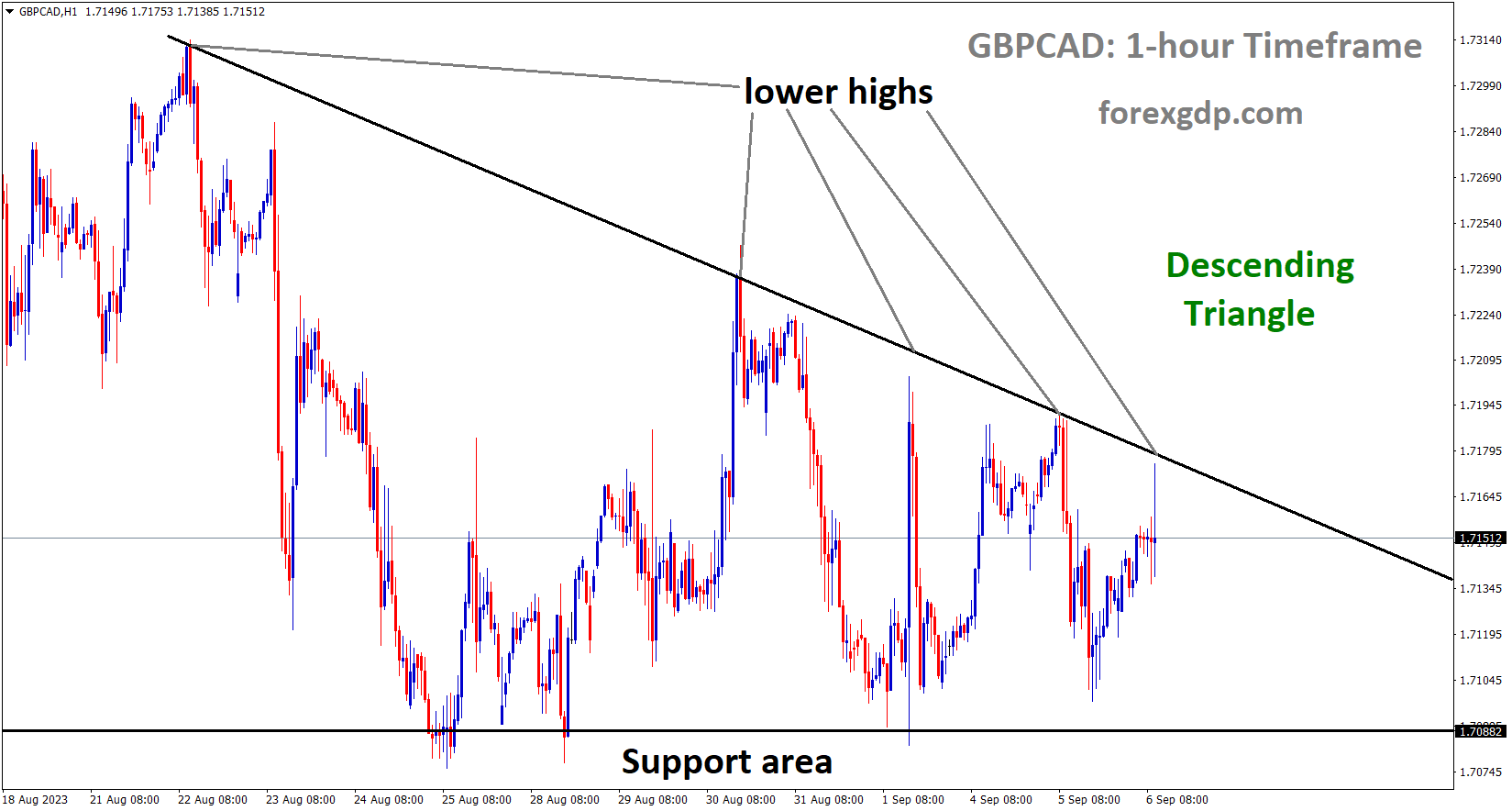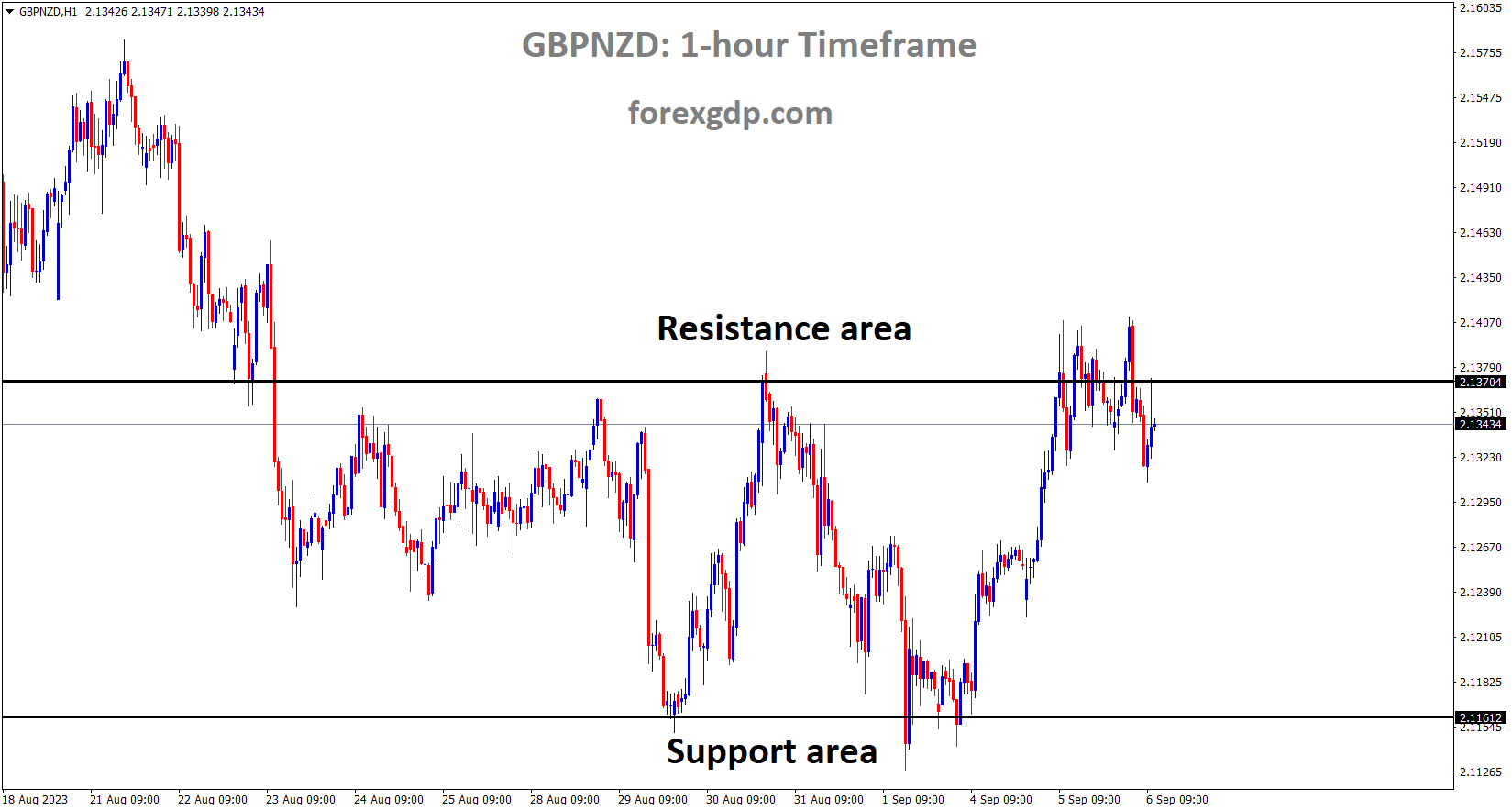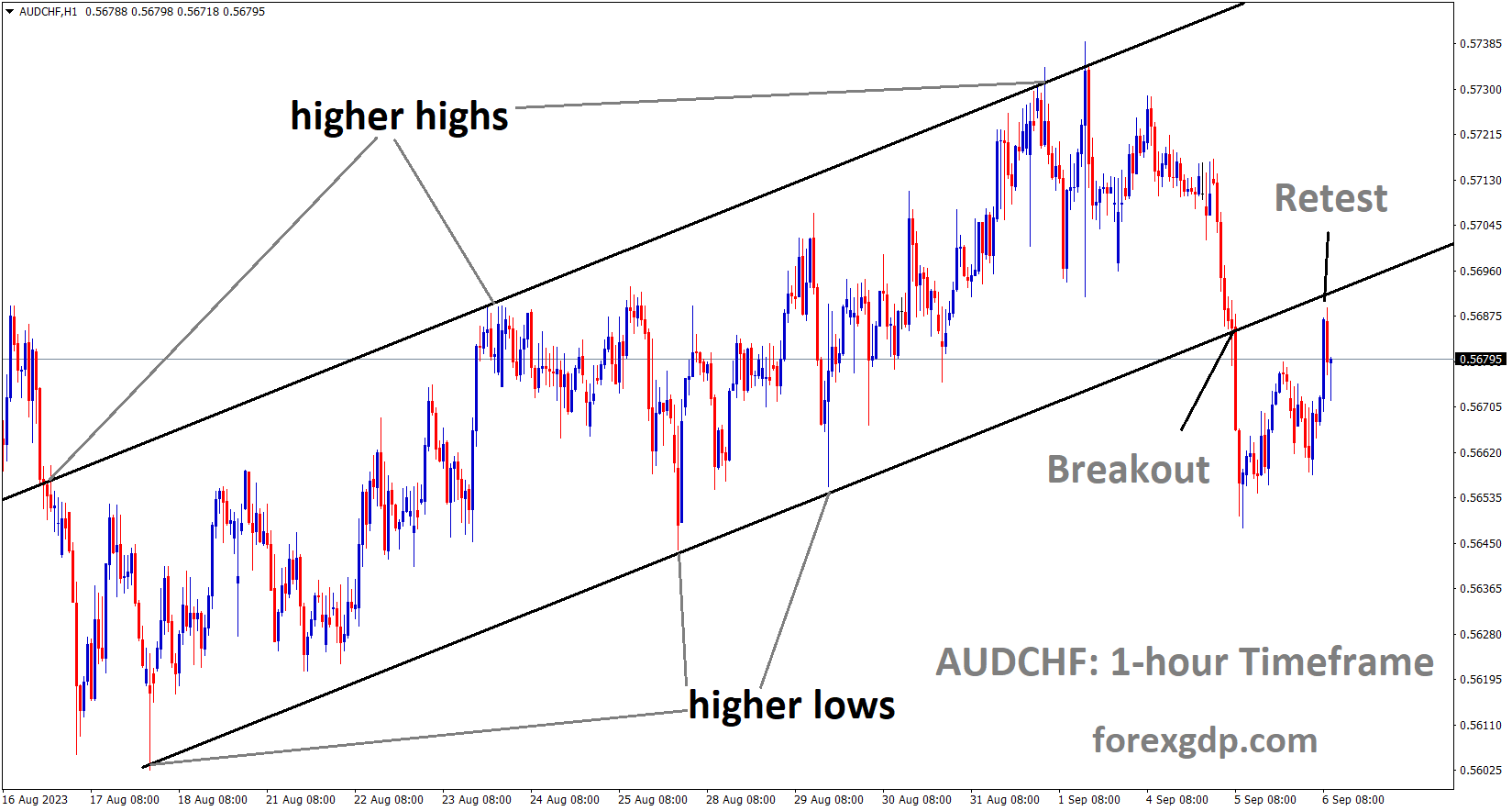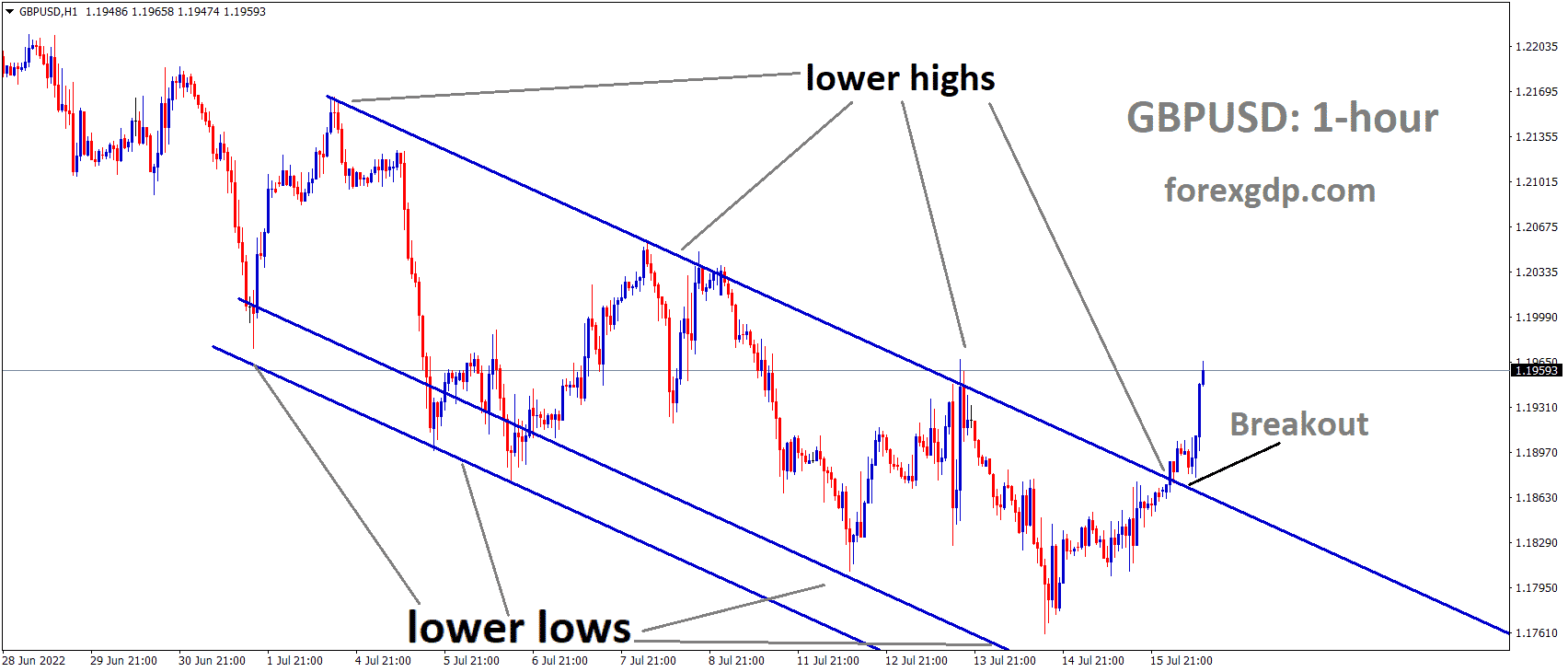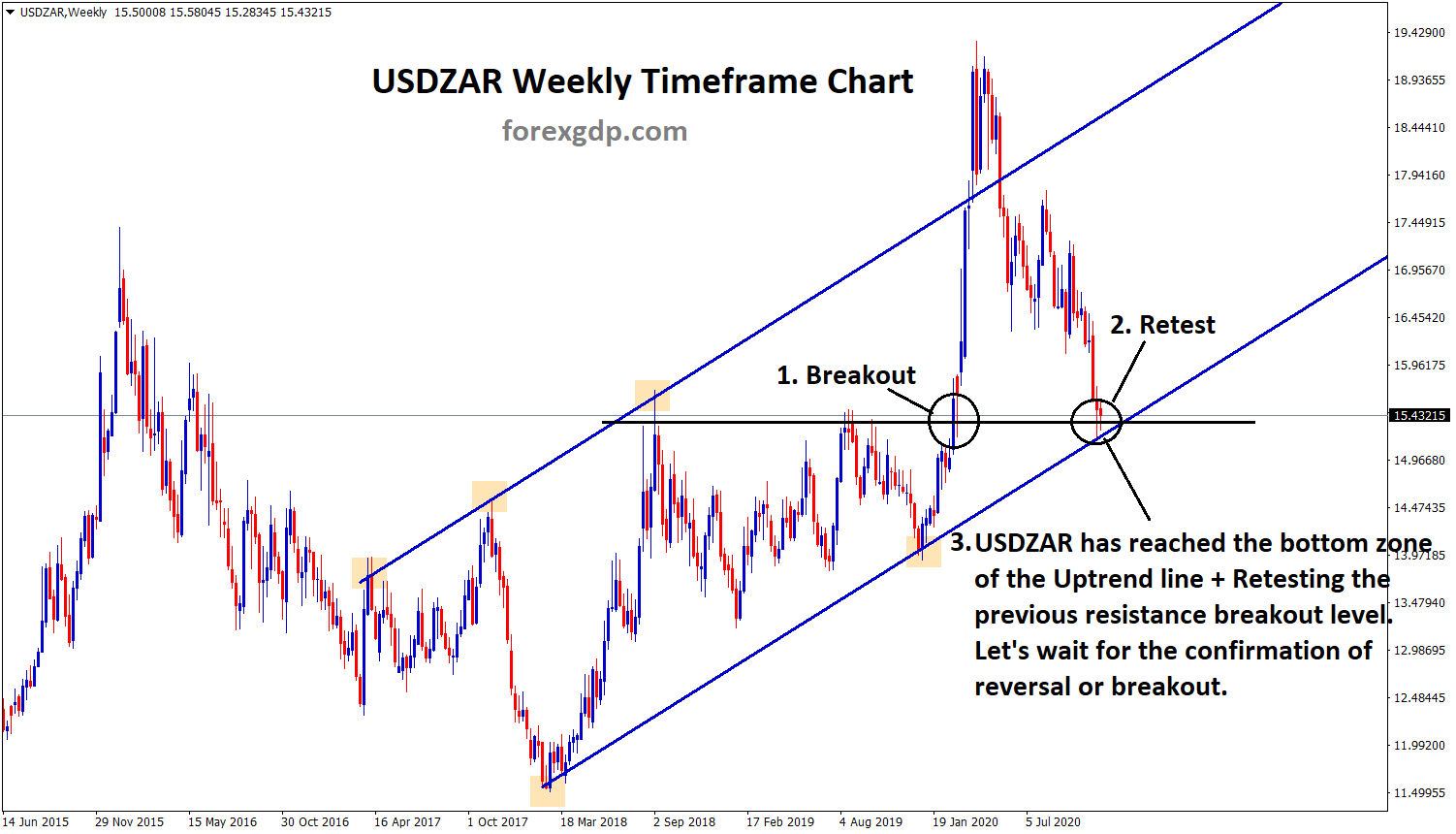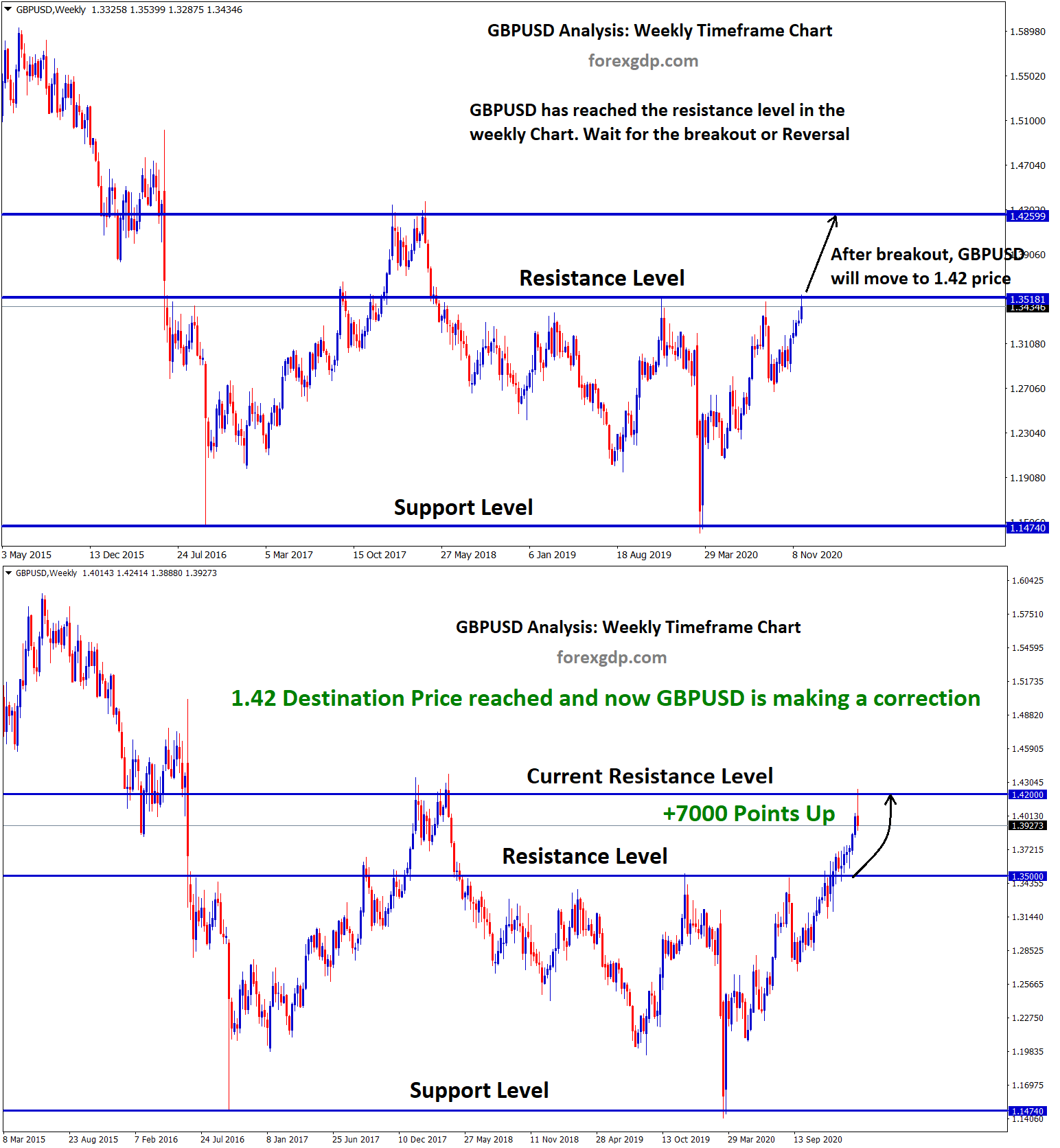GBPJPY Analysis
GBPJPY is moving in the Descending triangle pattern and the market has fallen from the lower high area of the pattern
Masato Kanda, Japan’s Vice Minister of International Affairs, stated that it is best to avoid sudden and volatile foreign exchange movements and that the depreciation of the Japanese yen can be managed with the right instruments.
The Bank of Japan’s market interventions and control over the depreciation of the yen made the speech beneficial for the appreciation of the Japanese yen.
Masato Kanda, also referred to as Japan’s chief of currency, holds the position of Vice Minister of Finance for International Affairs. He stated, “If these moves continue, the government will deal with them appropriately” in reference to speculative foreign exchange moves. The market perceives the language’s framing as more accommodating than it was during the Bank of Japan’s (BoJ) intervention. While this has been going on, the difference in value between Treasuries and Japanese Government Bonds (JGB) has not widened as much as it did at the USD/JPY peak.
While the yield on the 10-year Treasury note has been allowed to gradually rise, it is still relatively close to where it was in November of last year. The yield curve control (YCC) programme of the BoJ had previously anchored it to a yield of 0.50%, but it is currently close to 0.65%. The YCC policy was changed to allow for flexibility in implementation rather than to mandate adjusting the +/- 50 basis points band around zero percent for JGBs out to 10 years. The remarks made by Kanda san today may be indicative of a broader trend in which Japanese authorities are attempting to prevent abrupt and extreme volatility in the value of the yen. Although Hajime Takata, a board member of the BoJ, spoke on Wednesday, monetary policy was not much changed.
XAUUSD Analysis
XAUUSD Gold price is moving in the Descending triangle pattern and the market has fallen from the lower high area of the pattern
According to FED Christopher Waller, further rate hikes in the US economy will be unaffected by the recession. Fear of a global economic downturn will make gold the safest investment, and yellow metal prices may rise.
In that regard, the USD, as measured by the DXY index, rose more than 0.50% to its highest level since March, around 104.80, while US bond yields, which are frequently viewed as the opportunity cost of holding, rose more than 1%, with the 2, 5, and 10-year bond rates rising to 4.96%, 4.37%, and 4.26%, respectively. That yield increase could be explained by Federal Reserve (Fed) Chairman Christopher Waller flirting with another hike while claiming that it will not cause a recession.
XAGUSD Analysis
XAGUSD Silver price is moving in the Descending triangle pattern and the market has fallen from the lower high area of the pattern
On the plus side, investors are keeping a close eye on the Chinese economy, as data released on Tuesday showed that service activity fell to its lowest level in eight months, and the fear of a global economic downturn may limit the yellow metal’s downside.
USDCHF Analysis
USDCHF is moving in Descending channel and the market has reached the lower high area of the channel
According to US Commerce Secretary Raimondo, tariffs on China will remain unchanged from the previous Trump Administration. It incites anxiety in the relationship between the US and China. Thus, the value of the Swiss Franc is higher than counter pairs.
In an attempt to reverse the losses from the previous session, the USD/CHF pairs consolidates around 0.8890 on Wednesday during the Asian session. But there was downward pressure on the pair, mostly due to the strength of the US dollar (USD). A 1.51% increase in the yield on the 10-year US Treasury bond brought the yield to 4.25%, which supports the US dollar (USD). When the next data set is released later in the day, investors will be paying close attention. The US S&P Global PMIs and the US ISM Services PMI for August are included in this data. These announcements could give the USD/CHF currency pair a clearer direction and offer insightful information about the state of the American economy today. According to Reuters on Tuesday, US Commerce Secretary Gina Raimondo anticipates that the tariffs imposed by the US on China under President Donald Trump will not be changed until the US Trade Representative’s (USTR) Office has finished its ongoing investigation. The classic safe-haven Swiss franc (CHF) may become more appealing as a result of the escalating trade tensions between the US and China, which could also pose challenges for the USD/CHF currency pair.
As of this writing, the US Dollar Index (DXY), which compares the value of the US dollar to a basket of six other major currencies, is trading at about 104.70. There seems to be a growing recognition among market players that the US Federal Reserve (Fed) will not be raising interest rates at its upcoming September policy meeting. In addition, US factory orders for July fell to their lowest points since the middle of 2020. The data on Tuesday revealed a print of -2.1%, deviating from the 2.3% growth observed in the previous month and missing the market consensus of -0.1%. The CME FedWatch Tool indicates that there is a 93% chance that the interest rate will stay the same. Furthermore, Fed Governor Christopher Waller stressed that the data would be the determining factor in his interview with CNBC. Waller’s analysis of the data implies that the US Dollar’s (USD) strength has been supported by a favourable soft-landing scenario.
USDCAD Analysis
USDCAD is moving in the Descending triangle pattern and the market has reached the lower high area of the pattern
Today is the Bank of Canada’s interest rate decision-making meeting, and analysts predict no rate hike as a result.
Throughout Tuesday’s European trading session, the Canadian dollar has been losing ground against the US dollar as investors have taken stock of worries about the Chinese economy. Despite China being Canada’s second-largest trading partner, the Caixin PMI for China disappointed, and the loonie has since declined. Crude oil prices have made the Canadian dollar’s problems worse while the Dollar Index (DXY) finds some buyers in a risk-averse climate.
There are no major events scheduled for today as the USD/CAD pair gets ready for tomorrow’s Bank of Canada (BoC) rate announcement and the US ISM services PMI (refer to the economic calendar below). The graphic below illustrates how Canada’s inflation has been declining both in the core and headline categories prior to the rate announcement. This has given money markets the impression that the country’s current monetary policy is sufficiently tight to reduce inflationary pressures.
EURUSD Analysis
EURUSD is moving in an Ascending channel and the market has reached the higher low area of the channel
Rates are almost at their peak, according to ECB Governing Council member Villeroy, and inflation will reach the 2% target in 2024–2025. Increases in interest rates will only slow down the economy and raise concerns about a recession.
EURCHF Analysis
EURCHF is moving in the Box pattern and the market has rebounded from the support area of the pattern
Francois Villeroy de Galhau, a member of the European Central Bank’s (ECB) Governing Council, reaffirmed on Wednesday that we are near or very near the peak regarding interest rates and that our options are open at the next and the upcoming rate meetings. There is no recession, just a slowdown. Could even slightly increase our 2023 growth prediction for France. had early victories in the fight against inflation, but more work is still needed. It is imperative that we reduce inflation to 2% by 2025. The monthly rhythm of inflation can be affected by recent variations in petrol prices, but the underlying disinflation trend remains unchanged. Inflation control is still our top concern. Sufficient duration of rate maintenance now counts for more in our fight against inflation than additional large hikes.
GBPCAD Analysis
GBPCAD is moving in the Descending triangle pattern and the market has reached the lower high area of the pattern
August’s UK Composite PMI was 48.6, down from July’s 50.8; the Services PMI was 49.5, down from July’s 50.0. Following the release of the news, GBP fell against Counter pairs.
The UK S&P Global/CIPS Composite PMI fell to 48.6 in August from 50.8 in July during the European session, marking the lowest reading since January. This decline was primarily caused by a declining Services PMI, which printed 49.5, below the 50 threshold that divides expansion/contraction territory. Meanwhile, data from the EU and China showed that the majority of the world’s economies are contracting. Interest rate probabilities indicate that money market futures anticipate a 25-bps rate hike by the Bank of England (BoE), despite data suggesting economic conditions would not support another hike. There is an 87% chance that the Bank of England will hike interest rates for the fifteenth time since Andrew Bailey and Co. started their tightening cycle in December 2021. Market participants anticipate that the BoE will hike again in the early months of 2024, as the bottom picture illustrates.
GBPNZD Analysis
GBPNZD is moving in the Box pattern and the market has fallen from the resistance area of the pattern
After declining by 2.6% in July, the ANZ Commodity Price Index fell to -2.9% this month. In Q2, the NZD Trade index increased to 0.40% from a 1.5% decline in Q1. The NZD has been weakening versus the USD as a result of published negative data.
On the Kiwi front, the ANZ Commodity Price fell 2.9% in August after declining 2.6% in July. The New Zealand Terms of Trade Index saw an improvement earlier this week to 0.4% in the second quarter, as opposed to a 1.5% decline in the previous reading and an anticipated 1.3% decline. Furthermore, the New Zealand Dollar NZD, a proxy for China, is under pressure due to the weaker-than-expected Chinese Services PMI data, which also affect risk sentiment. August saw the slowest growth in China’s services sector in eight months. The Chinese Services Purchasing Managers’ Index PMI dropped from 54.1 in July to 51.8 in August, according to a Tuesday report from Caixin.
AUDCHF Analysis
AUDCHF has broken the Ascending channel and retest the broken area of the channel
According to Australian Treasurer Jim Chalmers, China’s economy is struggling due to real estate concerns, and Australia’s economy is impacted by its exports to China. It will be resolved soon, and Australia will not experience a recession.
The slowdown in China’s economy and higher interest rates at home will put significant pressure on the Australian economy, though the country should manage to avoid a recession, stated Australian Treasurer Jim Chalmers on Wednesday. According to Reuters, the legislator had an early Wednesday interview with ABC Radio.
The official also noted that Australia had not been exempt from signs of weakness in the world economy, calling the recent developments in China very concerning. We have observed that the Chinese economy has been slowing down significantly, especially in their property sector, but also in their retail and export sectors. And that is clearly significant to us, Australian Treasurer Chalmers remarked.
The Australian economy’s Q2 GDP data shows a slowdown to 2.1% from 2.3% in Q1. The data is above expectations, which is encouraging for the Australian dollar relative to other currencies.
As the Australian economy contracted in the second quarter of this year, the Australian dollar depreciated compared to the US dollar, supporting the notion that interest rate hikes by the Reserve Bank of Australia (RBA) are coming to an end. In contrast to expectations of 1.8%, the economy grew 2.1% year over year in the April–June quarter after expanding by 2.3% in the January–March quarter and 2.7% in the final quarter of 2022. GDP increased by 0.4% during the quarter, as anticipated. This was due to net export volumes exceeding analysts’ projections by more than twice as much, as the government invested heavily in infrastructure during the quarter to counteract the decline in household consumption. The trajectory of data is probably going to fuel expectations that the RBA will continue to hold interest rates at current levels for the remainder of the year. The Reserve Bank of Australia (RBA) raised hopes that the tightening cycle was ending by holding interest rates steady during its meeting on Tuesday. The RBA stated that recent data were consistent with inflation returning to the 2-3% target range by 2025.
Nonetheless, the central bank restated that additional tightening might still be necessary, depending on how the labour market and inflation outlooks are shaping up. Australia’s CPI decreased more than anticipated in July, supporting the RBA’s assessment that inflation is likely past its worst. The markets believe there is a slim chance of one more hike before 2023 ends. The outlook for the Chinese economy would be crucial, as the RBA pointed out on Tuesday even as it maintained the cash rate at 4.1%. Although Chinese officials have responded in recent months with a flurry of support and stimulus measures, sentiment has not yet been significantly affected by them. Australia’s top export market is China.
Don’t trade all the time, trade forex only at the confirmed trade setups.
Get Live Free Signals now: forexgdp.com/forex-signals/

